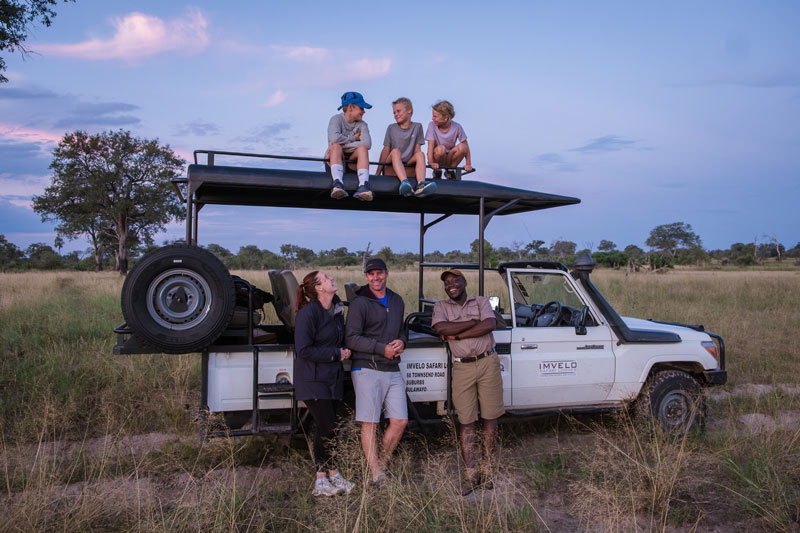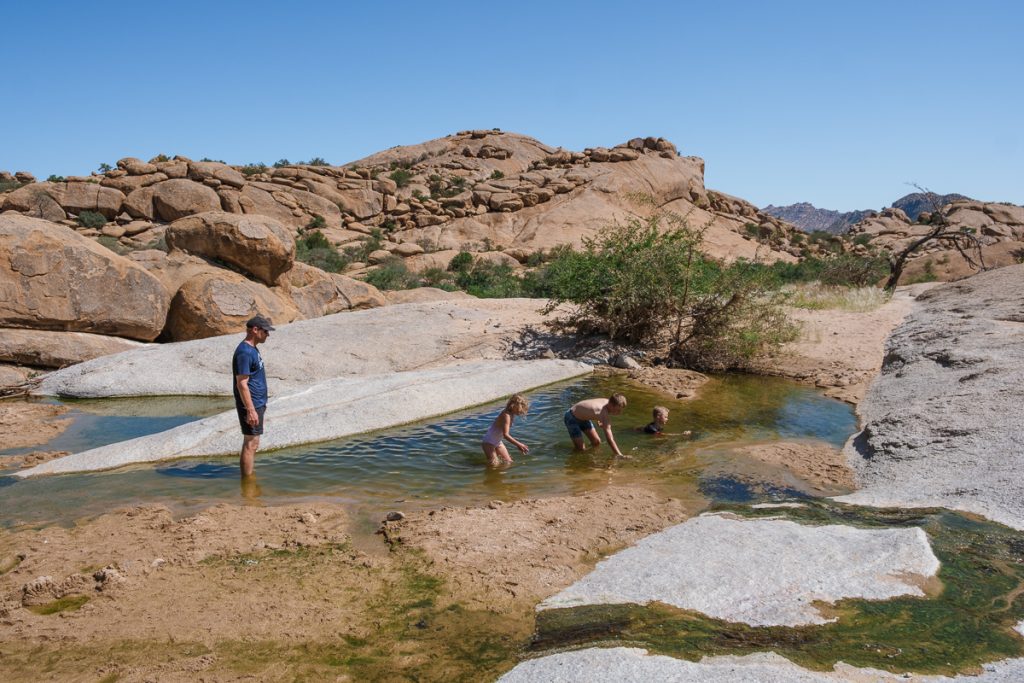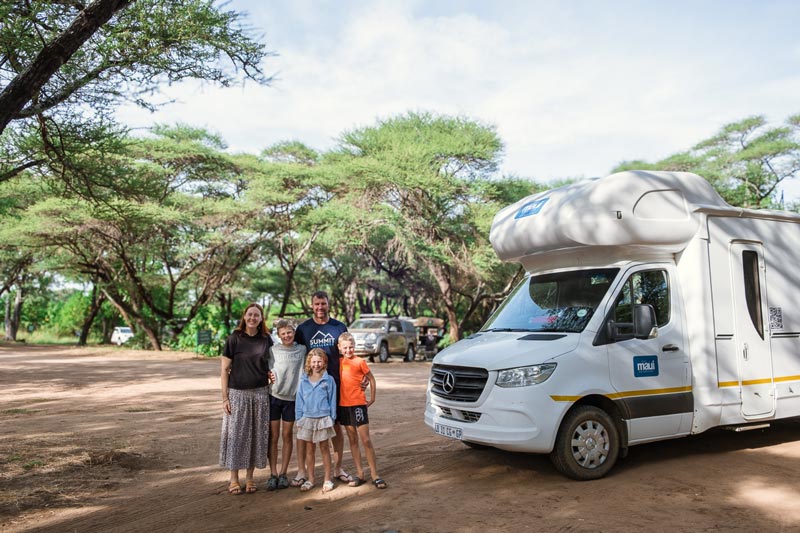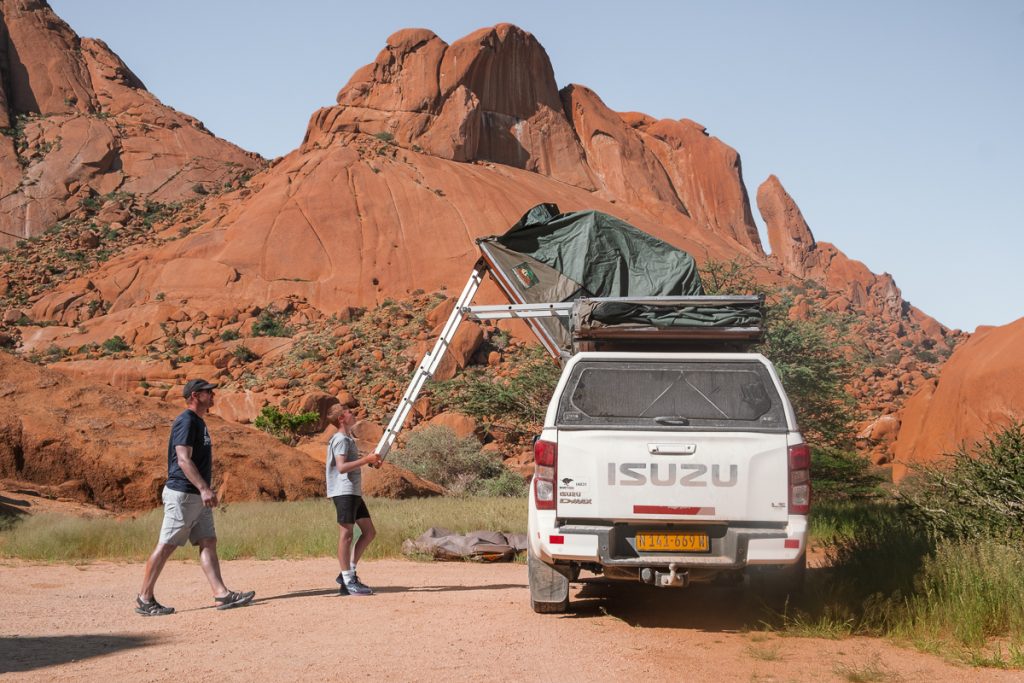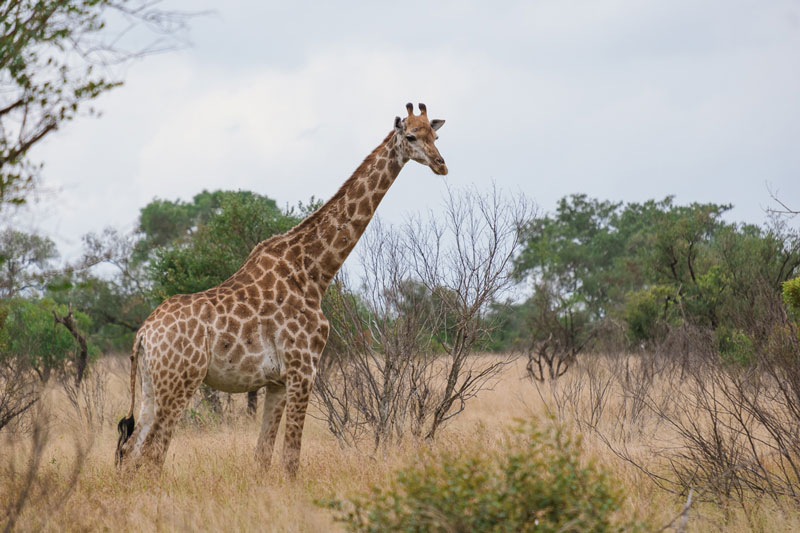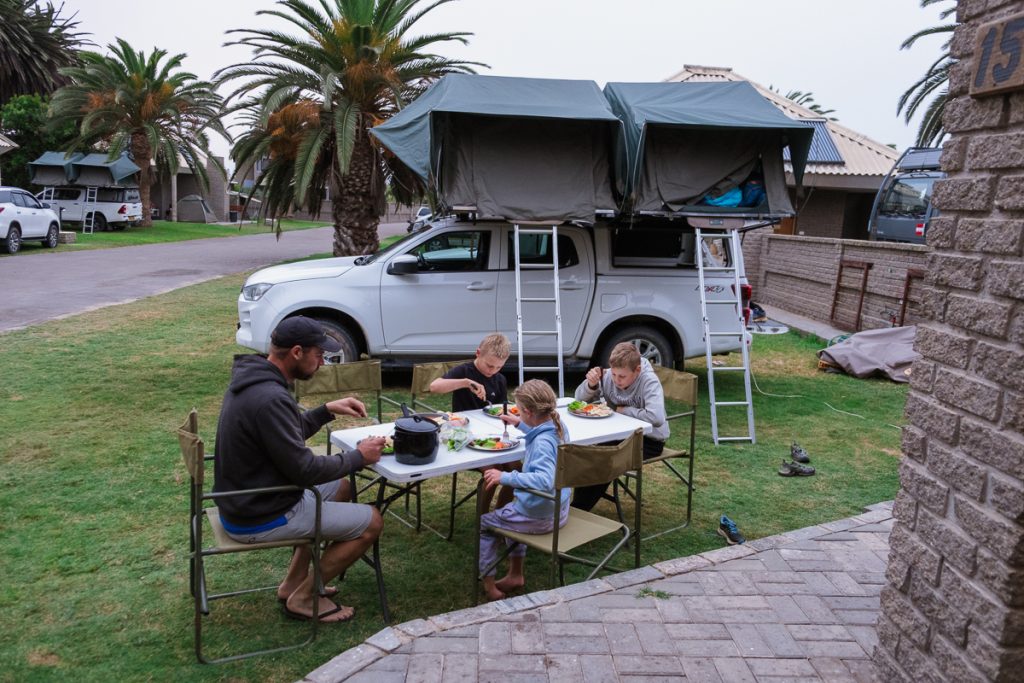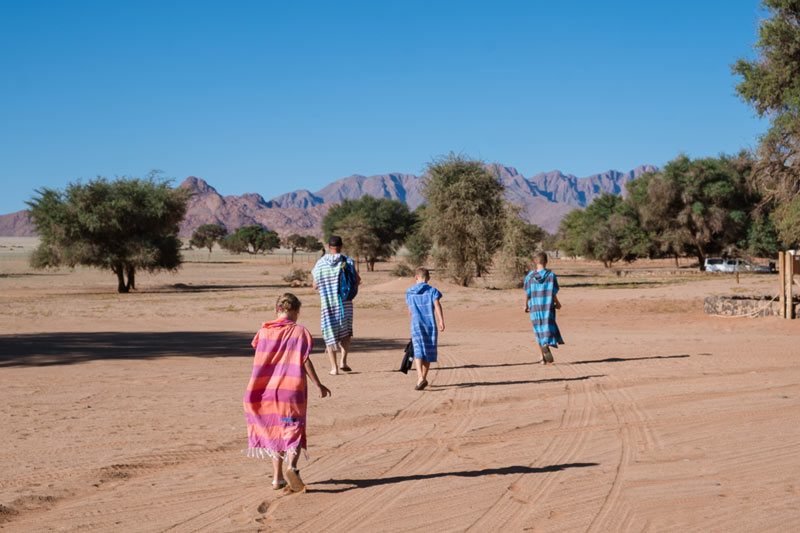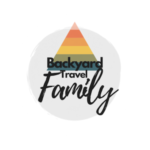How to plan a trip to Africa with kids
Don’t plan a safari trip to Africa without knowing this first
This is the second time my husband and I have been to Africa. The first was an overland truck for 6 weeks and our most recent trip was a road trip across Africa with our kids for a month.
We planned our African road trip independently and did not use a travel agent and despite what they will tell you, it’s totally doable if you prefer to plan that way.
I am so excited that you are planning to visit Africa! eek!
I’ll start with a few things you need to know before planning a trip to Africa and then give you everything that worked for us including why we chose rooftop camping and how that panned out, what to pack, our Africa travel budget and more.
So excited you are thinking about planning a trip to Africa – it was honestly the trip of a lifetime! Here are a few myths debunked and some hometruths about planning a trip to Africa with kids.
- Africa is expensive. If you’re thinking that it might be a cheap trip like to Asia… sorry to burst the bubble but this trip will require some savings.
- You don’t have to take a tour. If you find planning overwhelming and just don’t want to deal with all the details, then a tour is a great way to experience it and give you a real holiday. But if you like to adventure a bit on your own, you can definitely self drive Africa. We have some posts on our self drive Africa itinerary.
- You can take kids on safari: But many safari lodges have a minimum age or around 6/7 years old, so take that into account if you wish to stay at a luxury lodge.
- You won’t be eaten by lions if you camp in Africa: There are some campsites that are open to the wild, but many are all fenced off making the likelihood of encountering wildlife low. We didn’t see anything exciting camping, but maybe don’t sleep with a rump steak in your tent.
- The drives can be super long and they’re not super scenic: There’s often a long way between “attractions” so prepare for lengthy drives. While I tried to keep the family looking out the window and enjoying the surroundings, there were definitely hours on end that nothing changed in the landscape. Bring road trip activities
- Vaccinations and malarials will add up depending on what you’ve had already. It cost me way more than I thought.
- You don’t have to dress up like Dora the Explorer in beige and khaki to go to Africa. See our packing list below to see what we took and why.
- You don’t have to go in peak season. We visited in a shoulder season and we had an epic time.
- If you’re wondering how to plan a trip to Africa on a budget and if that’s even possible.. it is. Camp, skip luxury lodges for self drive and self catering will be the cheapest way to do it.
- It’s likely to be the trip of a lifetime: It took a wee bit more to plan and a lot of savings to make it happen, but the looks on the kids faces and the time we had together was priceless
So here comes all the questions we’ve been asked by family, friends and the lovely people of the internet about our trip. We hope we cover all our thought processes along the way.
This is by no means a “you must plan it like this” but I hope it gives you insight into our experience and why we chose the activities and travel we did. It should help you to make some decisions when planning your family trip to Africa.
Right, looking for how to plan a safari trip to Africa? Then lets scroll on down and give you all the details
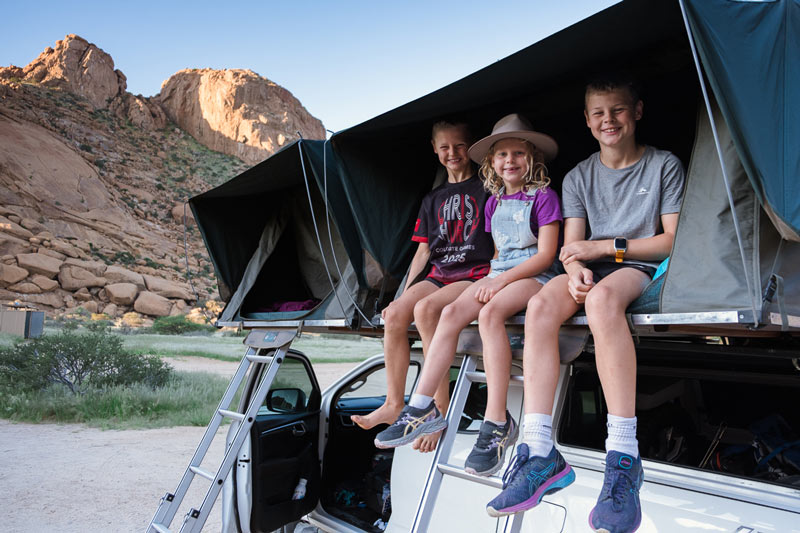
Table of Contents: How to plan a trip to Africa
- The Planning Stage and Africa FAQs
- How I planned my family trip to Africa
- What is the best time to travel to Africa?
- Mobile Simcards in Africa
- Cash and Travel Cards in Africa
- Vaccinations/Health
- Our detailed Africa Travel Budget
- Pros and Cons of Rooftop Camping in Africa
- Family Packing List for a safari trip in Africa
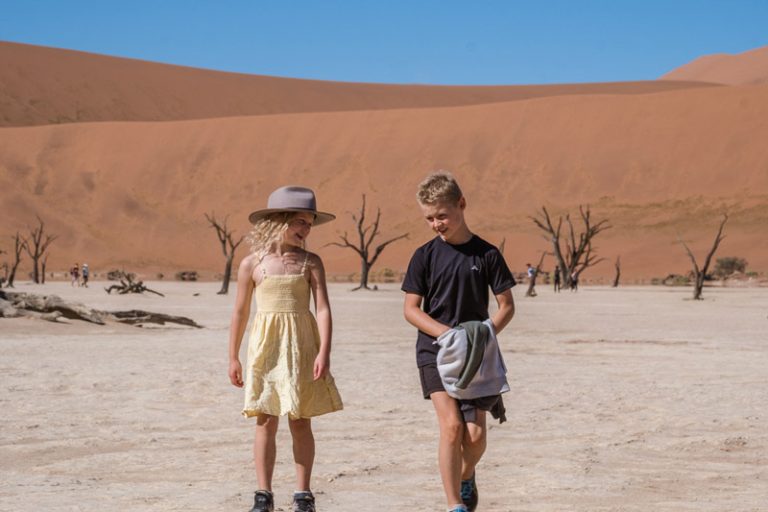
The Planning Stage and Africa FAQs
Honestly, planning our road trip in Africa was a little overwhelming at first. We had taken an Intrepid Travel overland trip back in 2010, a 6 week journey from Nairobi to Cape Town so we have dabbled a little in the continent. But you honestly don’t look at the logistics in any many when you are aboard a tour, so this was a different kettle of fish.
The biggest questions for us were
- Is Africa safe to travel with kids?
- Will the border crossings be as scary as the media makes out?
- We know the roads can be bad but how far can we actually plan to travel in one day
- Will there be too much driving?
- How much will an Africa road trip cost?
- What should I put on my Africa road trip itinerary?
All very valid questions and I’ll answer all of these as we go! Here are a few quick fire FAQs for family safaris in Africa but scroll on down to get all the juicy details
Can you take kids on an African Safari
Yes you definitely can. I’d recommend a self drive safari in Kruger National Park or Etosha National Park if you have younger kids under 6, but older than 6, you have so many safari options
What is the best age for a family safari?
Most guided game drives, even at luxury lodges, require kids to be 6 years old and up, so I would recommend 6+ years old. Some lodges may allow children younger than 6 to go on a game drive in a private vehicle (not shared with other parties) and this may cost extra.
If you have kids younger than 6, I recommend a self drive safari in Etosha National Park and Kruger National Park, as there are no age limits to self driving and you can just work at your own pace.
Kids will need to be good at driving long distances and sitting for long periods of time, often very quietly, so if your kids are 6-9 years old and can’t sit still yet…I’d hold off until they can. Safari highlights will show you all the amazing faces and wildlife, but forget that sometimes you’ll drive for three hours without seeing much and there are multiple game drives a day at the lodge. You don’t want to spend all that money to listen to whinging.
Which African country is best for a family holiday?
- Namibia is great for cool desert landscapes with some creature comforts of good supermarkets and german bakeries. I think its one of the best places to visit in Africa for first timers.
- Botswana is great for families who are keen on the luxury lodge and African safari experience
- South Africa combines some great self drive family safaris with some beachy locations making for a well rounded trip.
- Zimbabwe we only visited for such a short time and only for the Hwange Rhino Initiative and Victoria Falls which we both loved but didn’t feel like we stayed long enough to really comment here.
We can’t comment on any other African countries with kids but I’m sure there are many more.
Where is the best place to go on Safari with kids?
The best place to go on safari with kids is Botswana in my opinion. You can visit a luxury lodge if you’re wanting an all inclusive guided experience, or self drive to places such as Chobe National Park or Moremi Game Reserve, or even visit the meerkats with Planet Baobab. Older children will enjoy the Okavango Delta. It’s the diversity of family safari options in Botswana which makes it a great destination for kids.
Which African country is the most affordable for a family safari?
The most affordable safari our family did was in South Africa. We managed to book three nights camping for five people, including our day rates to visit the park was around $750NZD ($440USD). I feel this was a great price and a great way to see African wildlife on a budget. If you’re wondering why I didn’t say South Africa to the above question, it’s just that the Botswana safaris felt more wild. Maybe it was the tarsealed road in Kruger… I’m not sure. We really loved it at Kruger and it offered everything so you won’t be disappointed.
Do you need a travel agent to book a family safari?
I didn’t use a travel agent to book any of our month-long trip to Africa, but I’m a researcher and planner and I trust myself to know my family and what we’d like. But it takes a ton of time to research and many operators only make bookings via email (multiple) so if you’d rather not, a travel agent would be a good bet to get it done faster and handle all those logistics.
We didn’t have anything go wrong on our trip, but maybe if we did I’d change my mind haha. But it’s totally possible to do it yourself.
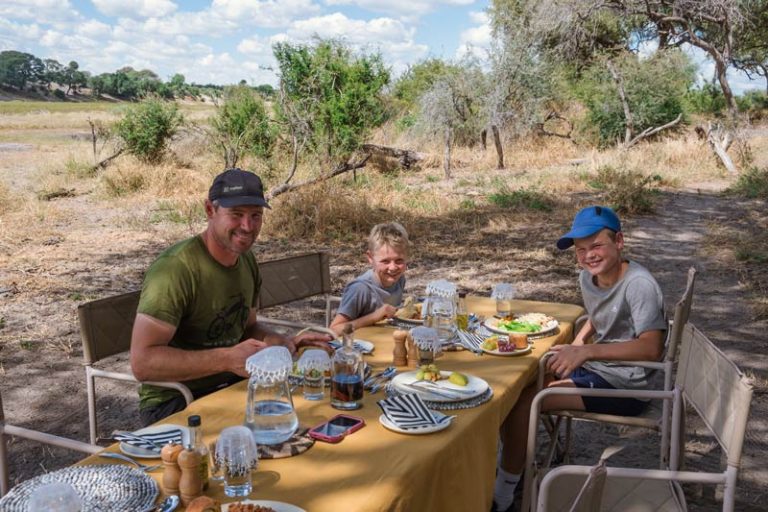
How to plan a road trip to Africa
Like every big trip that I don’t know a ton about, I get my information from a big range of places
- Blogs: There were some great blogs by the TraveLyn family from the UK about self driving in Africa which gave us a ton of confidence, and if you’re here, perhaps us too
- Instagram: Pretty places to see along the way
- Overland trips/tours with companies such as Intrepid: If you’re looking to make sure you know all of the “big highlights” of a place then a tour company itinerary is a good spot to start.
- Once I have found my big ticket items, such as a safari in Hwange National Park, or visiting the meerkats in Namibia, I will then google things to do near this places to fill in the time between big locations.
- For camping, I love to stay in pretty or quite unique places, so I had a good google of that too
- Tracks4Africa was awesome for using the map to find campsites along the way. It doesn’t have every campsite but I’m sure it’s the majority and made life very handy!
- I actually found that Google maps was pretty accurate for drive times. Compared to New Zealand there aren’t a lot of places to stop along the way to prolong the drive and assuming your gravel roads are still driveable at 80km/h, it was a good way to plan.

The Best Time to Travel to Africa?
If you are planning a safari trip to Africa, the best time to visit is usually whenever dry season is. In a nutshell, dry season means that animals are looking for waterholes and they often congregate around this area, rather than spreading out all across the park.
This makes is easier to find animals on safari and you may get to see a number of species close together too.
But the best time to travel in Africa is almost a silly question to answer. Africa is a HUGE continent spanning both hemispheres and what is recommended in one country might be completely different timing to another country on your Africa bucket list.
I’ll let you know that the two times we have visited Africa has been in “shoulder seasons” and we had an absolutlely magic time. Prices can also be cheaper in shoulder seasons or low season so that may help if you’re planning to visit Africa on a budget.
Here are the general recommend best times to visit Africa for popular safari countries, but do your research too.
Note: We didn’t want to self drive in low season as this is the wettest time, making some roads hard to drive on as we aren’t super experienced 4WDers
- Best time to visit South Africa: May – October for the winter/spring season is better for wildlife, whereas Dec-Feb is best for beaches as its summer. Also note that National Park camping fills up fast in school holidays so take note of that
- Best time to visit Namibia: May – October for better wildlife viewing and cooler temperatures. Summer months of Dec-Feb can be very hot and humid and more risk of floods
- Best time to visit Botswana: Winter months of April to August. If you want to visit the Okavango Delta in full flood aim for July and August. We were too early in mid April. Also if you’re interested in seeing the Zebra migration, the zebra usually move from the flood plains of the Okavango Delta and Chobe down to the Makgadikgadi and Nxai Pans during Dec-March
- Best time to visit Zimbabwe/Zamiba: Again, May to October is recommended as its dry season. If you’re visiting Victoria Falls, its in full flood from February to May. We visited in late April which was cool to see, but actually better to photograph when we visited in October years ago. Tons of spray!
- Best time to visit Tanzania: June to October is their long dry season which is good for game viewing. It’s also a great time to visit Zanzibar for a beach holiday as theres little rain. There’s also a short dry season in January and February which is apparently a good time to see big cats, but it’s also high season so more expensive and hotter. July to September is the best time for the Great Migration.
- Best time to visit Kenya: Similar to Tanzania with the timing of the Great Migration across the Masai Mara. The shoulder seasons are November, December and February
My advice is figure out what is the most important factor for you. It may be budget, temperatures or too see one of the special migrations and plan for that. Then everything else will fall into place around it. You’re unlikely to find the perfect time for everywhere, but that’s okay too.
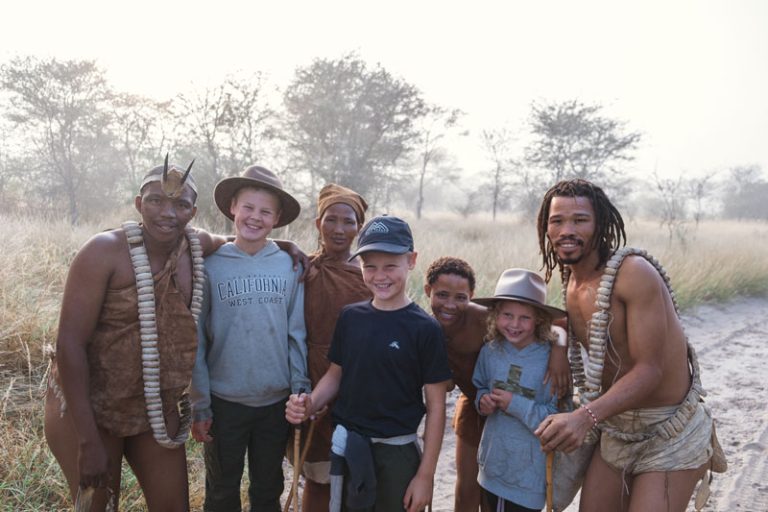
Mobile Phone Plans in Africa: eSim or local simcard?
We picked up local sim cards at the airports in both South Africa and Namibia. I’m a big fan of the eSim because you can sort it out before you go, but it was cheaper to get one at the airport and we had the time, so I went with that.
If you are arriving late, or crossing a land border where you might not have access to a store that sells local sim cards, then an eSim would definitely be the way to go. We arrived into Vietnam after all the stores were shut and couldn’t pick up our prebooked local sim card, so an eSim would have been way easier in that instance.
It was around $16 for a couple of GB of data in South Africa that I tried to exclusively use for google maps as I apparently use a crazy amount of data at home (unlimited so I don’t notice) and didn’t want to run out while scrolling. That could have been a fail.
I spent about $30 ish for 25GB perhaps in Namibia. I didn’t need that much but since we were there for more than a week, the timeframe meant I had to opt up to the next data bracket. Again, mostly for google maps and a few necessary tasks but I could have gotten away with just a few GB of absolute necessary trip admin.
If you think an eSim would be easier, we’ve used Airalo before and it was great. But I’d just shop around as different companies offer different packages.

Currencies, cash and money cards in Africa
Travelling across different countries meant three different currencies and a little bit of apprehension about whether most places accept cards or not. But it turned out to be pretty easy.
We had booked a lot of our expenses ahead of time. We booked some accommodation with an online portal, or just paid a deposit. Our rental car we paid a deposit then paid with our credit card when we arrived. And we got a small amount of cash out on arrival for minor expenses and tips.
One of my best tips for travelling to Africa, get a Wise travel card!
Even if you are booking most of your expenses online, you will want to get a travel Wise card ahead of time! You will be making deposits in Namibian, Botswanan or Zimbabwean dollars and through your usual bank credit card you will pay a number of fees including a probably quite terrible exchange rate.
But with a Wise travel card, the rates are far better and much closer to your XE exchange rate when you google the average rate.
I am an affiliate but this card saves me so much money, that’s why you use it and you should too!
If you use this link to sign up, you can get a free physical Wise travel card or no fees on transfers of funds up to NZ$900.
Is a Wise Card like a credit card or debit card?
- Online it works a bit like a credit card, in that you can make online purchases with the card number and expiry (obviously you need to add money to the card first)
- You can use it at ATM machines overseas and take out cash for a much better rate than using your own credit card
How does the Wise Card work?
- You add money to the travel Wise card to be able to spend. You can add it from a credit card but if you have plenty of time (eg. overnight) its cheaper to add to it by bank transfer
- If you add money in NZD$ via a bank transfer, it doesn’t cost you any money, but if you use a debit card, or credit card, it does cost a fee. For example at the time of writing, to add $NZ1000 via apple pay or credit card, the fee is $14.80 but arrives in seconds, the POLi transfer is $2.65 but the manual bank transfer is $0 and should arrive in a few hours or up to overnight.
- Once you had a pool of home currency, you can transfer this into your currency pockets. This works out really good if there’s a good exchange rate at the moment if you want to take advantage of it. I always thought that you had to put it in a South Africa Rand pocket for example to be able to make use of the funds, but in fact you don’t. If you don’t have a pocket for the currency, it will take it out of whichever has the best exchange rate and charge you at the exact rate at the time. This means you don’t have to “guestimate” how much money you need and worry about exchanging the money, not using it and changing it back… if that makes sense
- You can also set up a direct transfer of money based on the exchange rate. For example, if the Japanese Yen reaches XX good exchange rate, please exchange $1000. This allows you to take advantage of a good deal without watching the exchange rate every day.
So what did we do on our African road trip for money
- We transferred about $10,000NZD to spend from to start our trip and added another $5000 along the way just in case and when we had a big ticket item we didn’t plan on.
- We took about $200 Namibian dollars out for extra cash to pay for tips and small items, but we used our card as preference when we had the option. Most places we used in Namibia seemed to accept cards so that worked well for us. We took cash out at the airport, although a few machines weren’t working (that wasn’t just us, other people found that too)
- It was harder crossing a land border as it was often a while to get into a town to get cash out. So in Botswana we didn’t actually have any local money although we did have some USD as backup, which is an easy currency to exchange and we used this for tips at the Moela Safari Lodge when we stayed there
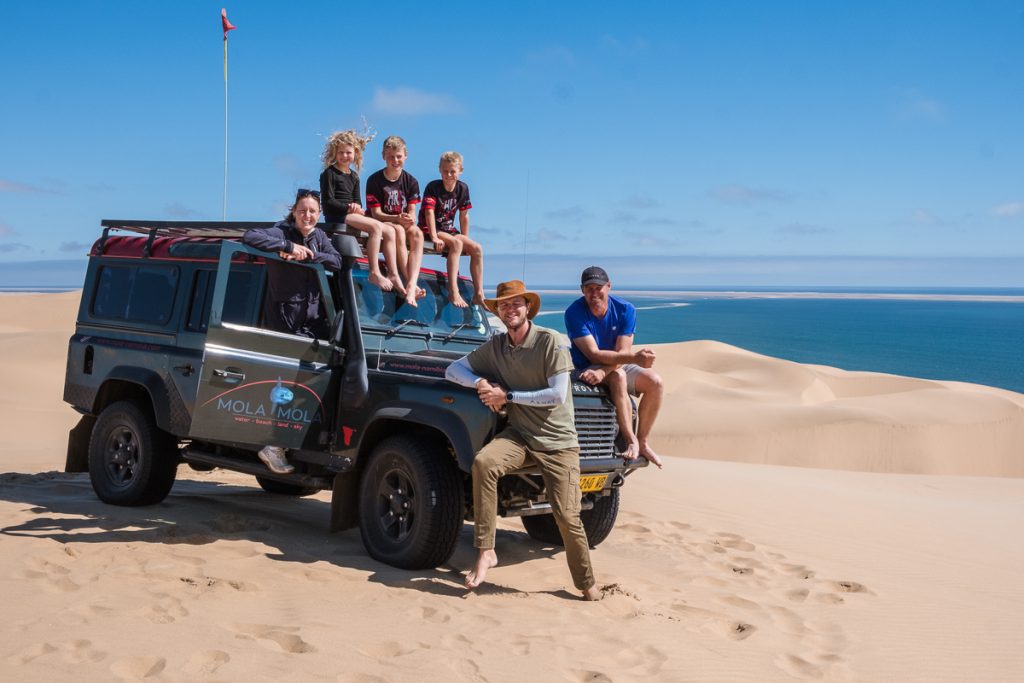
Vaccinations/Health
This is the biggest major expense that we had no idea the cost of and ending up added a few thousand dollars to our budget.
Firstly we had to get a few updated vaccinations such as Hep A and Hep B. A couple of the kids hadn’t had a chicken pox vaccination so they recommended that. We also needed typhoid. So in the end, most of us needed three injections in one sitting and my husband and I had a second lot.
On top of that we needed to get malarials as for our whole trip we visited South Africa, Namibia, Botswana and Zimbabwe. I know it’s possible we didn’t need it in Namibia but just made sense to keep taking it.
We took Malarone and Junior Malarone (under 40kg) and we had no side effects which was awesome, but for our 4-5 week trip away, for the adult does it was $430 per person.
I think with our vaccinations and malarial medication, the cost was around $3500 for 5 of us
I also asked the doctor to give us any extra medications he thought would be useful in case we were far from a doctor or hospital. So they gave us
- Liquid paracetamol for the kids
- Paracetamol tablets for us
- A powdered antibiotic to just add water for any bacterial infections
- Anti Diarrhea for the adults
We didn’t need any of these except the paracetamol, however it was really nice to have them on hand.
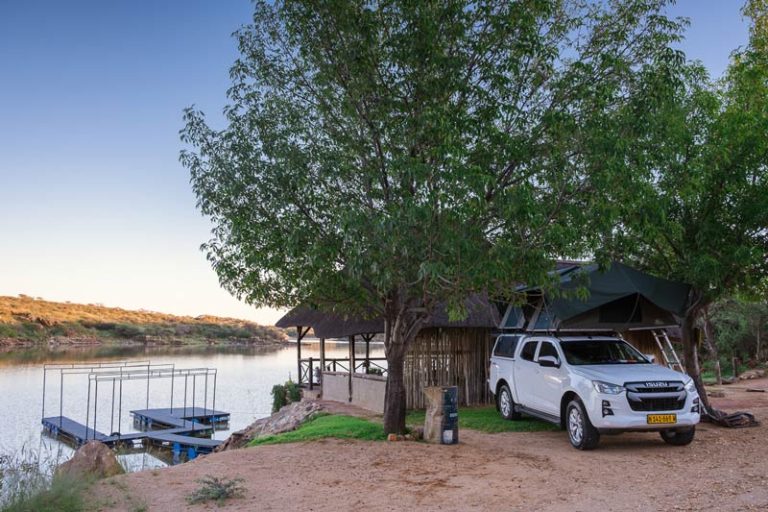
Africa Travel Budget
I write this blog coming from New Zealand, where prices are inherently quite expensive. If you’re used to travelling to Asia where things are remarkably cheaper, then this might come as a shock but Africa can be quite expensive.
But it completely depends on how you do it. We chose to travel by rooftop camper because it helps to keep the budget lower for accommodation, meaning we can splurge on other items later in. It also means we can self cater which we often prefer as all the cooking equipment is included, whereas a hotel or B&B accommodation doesn’t usually have these facilities
Major Costs: How much does it cost for a family road trip in Africa?
Flights from New Zealand
We travelled from Christchurch – Sydney – Singapore – Johannesburg return for two adults and three children for about $8000NZD with Singapore Airlines.
We first spent a week in South Africa before flying from Johannesburg to Windhoek which was about $1100 one way for 5 people, and from Victoria Falls back to Johannesburg for $1500.
I know a lot of people visit from the UK or Europe where the flights are much quicker and cheaper, but if you’re coming from Australasia, the flights will be a significant part of your overall budget
Vehicle Hire for our Africa Road Trip
I was quite surprised how expensive it was to hire a vehicle. You may think that since we were camping that this is why its so expensive, but it was often only around $50 per day more to get a camper vehicle.
I think it’s due to all the hard wear on the vehicles due to the roads being so terrible and the fact that you rack up so many kilometres.
Campervan in South Africa
It cost us around $1800NZD for a 6 day campervan hire in Namibia and we went through Kea Campers who work with Maui South Africa. This was a great option as it was hot in South Africa and the air conditioning was awesome when we were plugged in at night. We ran it at 18C and slept very soundly. In comparison a 4wd rooftop tent vehicle was about $1500 so not a huge difference for the convenience to pack up and go.
4×4 vehicle with double roof top tents in Namibia
We hired a vehicle from Warthog Safaris for about $6000 (including the $1500 one way rental fee) but was quoted anywhere up to $9500. So you are looking between $200 and $300 per day which definitely isn’t cheap
Major Accommodation
A luxury lodge stay should be on everybody’s list and it’s not just accommodation, it is the full blown safari experience.
A typical safari lodge experience will include all of your game drives and activities, meals and of course, your bed for the night.
There may be additional expenses if you are travelling with children. For example, some lodges require families with children 6-11 years old to have a private vehicle for game drives and this is often extra.
It’s also worth noting that there is often an age limit for kids visiting a lodge which is often around six or seven years old. A small number may allow younger kids, but there may be restrictions on game drive and costs for babysitting the kids while you are doing these. All things to consider if the kids are quite young.
Our stay at Moela Safari Lodge was just under $10,000USD for 3 nights for 5 people, all inclusive.
How much does it cost to camp in Africa?
Camping for our family of 2 adults and three kids under 12 averaged out around $100NZD per night.
Some campsites were super unique and the experience of just camping itself here was well worth the effort. In others, it was a toilet block and a patch of land.
You won’t find playgrounds and lots of things to do like you might in a New Zealand campground, but many we chose had pools, although they aren’t heated and since temperatures do drop at night, they were very fresh.
In general, kids under 12 years old were half the adult rate for camping
Big Ticket Attractions
Your big attractions will depend on your budget and your preference for activities. For example in Victoria Falls there are a lot of adventure activities, however we have done a lot in New Zealand so we didn’t feel the need to add these on here.
Our big ticket attractions were (in NZD$ for 5 of us)
- Mola Mola Day Safari: dunes and boat trip, $1800
- Heliopter Horizons Doors off helicopter flight: $2486
- Victoria Falls Flight of Angels: $1500
- Meerkat Excursion with Planet Baobab $750
- Kruger Park entry for three nights $557
- Sandboarding including lunch $243
- Victoria Falls Park Entry: $300
Other considerations
- You will need to pay National Park fees which are often on top of your tour/activity entry
- Visa entry if required, including the new Namibian tourist visa which was around $500NZD for 5 of us.
- Vehicle permits for crossing borders
- Tips will be added on top
Fuel costs in Africa
One of the things you won’t be able to avoid is the amount of kilometres you’ll put on the board when you drive across Africa as things can be really spread out.
We did 1477km driving for 6 nights from Johannesburg – Kruger – Blyde Canyon – Johannesburg and fuel cost a total of $444NZD
We drove from Namibia – Botswana – Zimbabwe and did a total of 3447kn and spend $772NZD on fuel
Vaccination costs and Travel health expenses
In case you skipped the above discussion on vaccination costs for Africa, we spent $3500NZD on travel doctor appointments, vaccinations and basic medicines such as antibiotics, paracetomol etc.
Visa Costs
We needed a visa for Namibia and Zimbabwe but not Botswana, coming from New Zealand. Do make sure you check the most up to date visa information
Our Namibia tourist visa was about $90USD for adults and $45USD for kids
Our Zimbabwe visa was $50USD per person.
Additional costs
- Tipping
- Tolls (we had a few in South Africa)
- Souvenirs
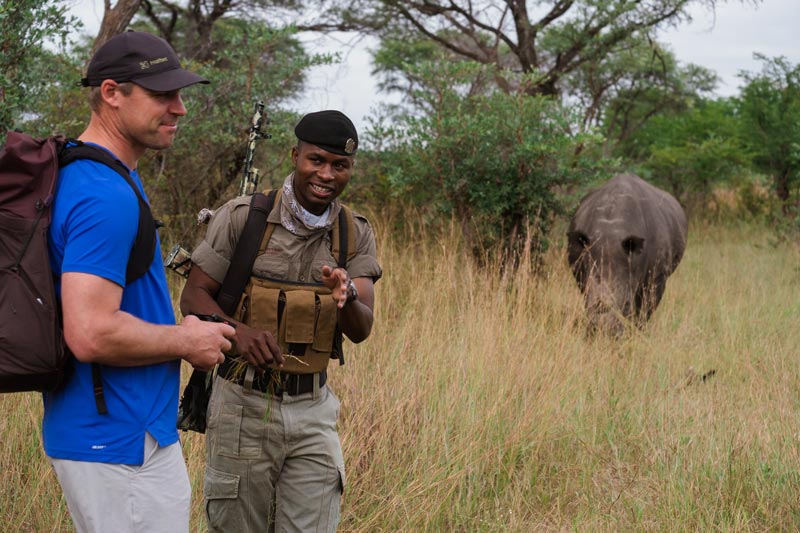
Rooftop tents
- What was included
- What we needed to bring
- Tips for packing in
- Any skills for 4wd
We had never ever tried rooftop tent camping before and I was quite excited. We have however done a lot of camping in New Zealand so the concept was not completely foreign.
We hired a Isuzu D-Max 4×4 vehicle with 2 x rooftop tents from Warthog 4×4 Safari Rentals in Windhoek, Namibia. We asked for the larger rooftop tents which they had on offer that were 1.4m wide by 2m, instead of 1.2 wide. This meant the kids could sleep width ways across the tent and could all fit in nicely. They actually did a really good job of sleeping well together.
The Warthog Safaris team collected us from the airport, which I recommend as it’s 40 minutes from the city and allowed us time to get out some cash and get a Namibian sim card.
We spent about an hour going through all the ins and outs of the vehicle, then we were off!
We did a “big shop” at SuperSpar at the Grove which was pretty much on my way south as we headed down to Sesreim. It was the best and nicest supermarket we visited and we got lots of great bakery bread from here too.
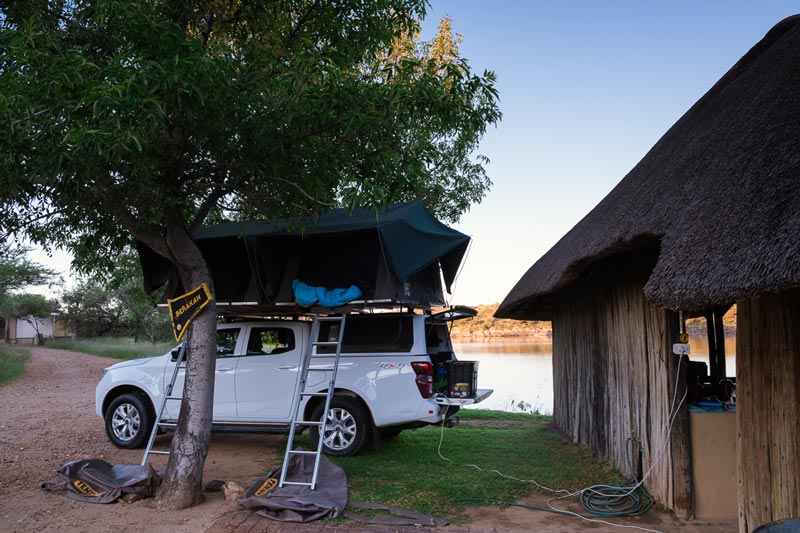
Here is what was included in our tent/camping setup
- Fridge with own battery (extra cost add on)
- Tables and Chairs
- A gas bottle with one burner plate you attach
- Big pot
- Small Pot
- Fry pan
- Tea towel
- Braii and tools
- Forks and Spoons (no butter knifes)
- Steak knives
What we had to add/bring
- Dishwashing detergent
- Dishbrush or cloth scrubber
- A decent light
- Own microfibre cloth
- Sleeping bags as we didn’t want to pay extra
- Water container
What I liked about rooftop tent camping
- It took about 10 minutes to put up both tents
- The mattresses stay up there and we actually left our sleeping bags in there too so there wasn’t much to set up after that
- Being up high felt nice and safe, however when we were in Africa in our late 20s we had ground tents and never felt unsafe, so I’m not sure it matters. But it feels nice up there.
- We asked for the larger tents, so our three kids actually fit across the tent width ways and we fit three kids in one tent. They were about 1400mm wide.
- There was ventilation on all sides of the tent as sometimes you really needed that breeze to cool down at night.
Downsides of rooftop tent camping
- Even if you are staying at the same campsite for a few days, you need to pack up your tent each time you want to go somewhere. If you book a tour, do make use of the “hotel” pickup so you don’t have to do this everyday
- The tents are made of canvas but I’m not sure how actually waterproof they were. We had rain on only two occasions but we got a few wet patches
- The mattresses were okay but as a side sleeper I could have done with a little more padding. It was alright but could have been better if the mattress was firmer. No memory foam if you have this like in a Kiwi Camping rooftop tent in New Zealand.
I actually really enjoyed the rooftop camping. We were on a pretty busy road trip where it was a new place most nights and this worked perfectly fine for us. The temperatures were pretty good for sleeping in as in April the temps cooled at nighttime, even if the day was quite hot.
I highly recommend it as an easy way to road trip around Africa.
Cost of Rooftop Camping in Namibia
- In general you are looking at $200-$300 a day for rooftop camping in Africa and that includes most of your gear. Our quote was for $6000NZD including just under $1500 for the one way fee. We were happy to pay this as we were a bit time poor at to do a big loop back to the start would have taken at least another week. Quotes did vary and we had quotes up to $10,000 for three weeks which is hefty.
- You also need to look at the price of insurance. We took the no added extra money basic insurance as our travel insurance covered up to that excess. There’s no point paying twice and it would have been cheaper to buy another tyre than to get the insurance that included the tyres (a common thing people often have to replace – we didn’t) So take that into consideration
- Also take a look at the gear that’s included. We had to add a fridge and we could have included bedding but in the end we just took our own sleeping bags and saved $400. The little add ons per day do add up if you are going for a longer period of time.
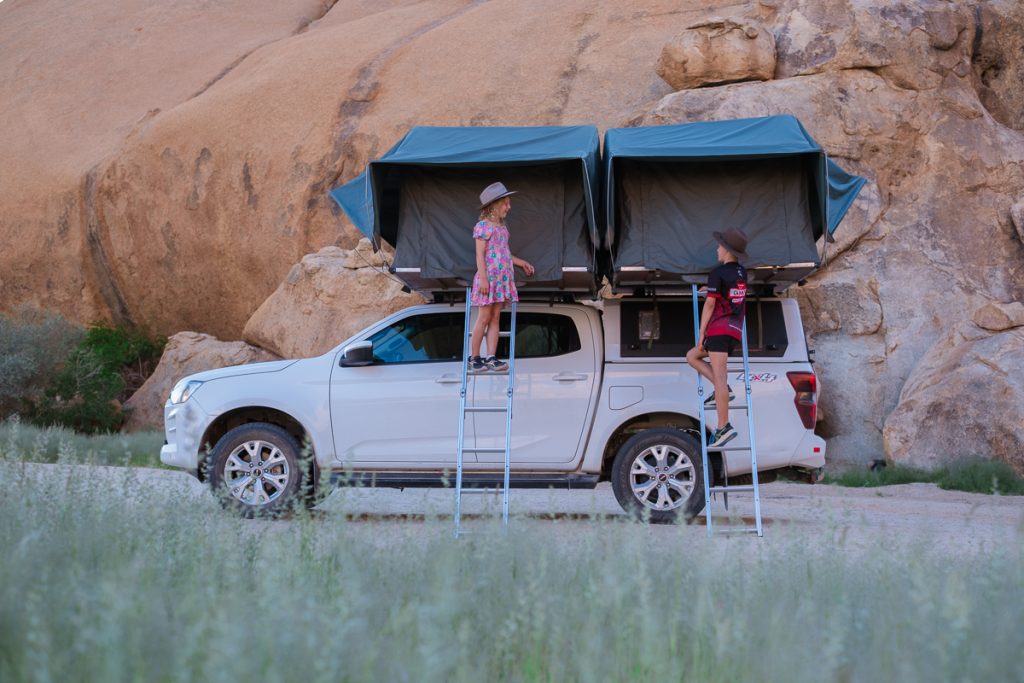
Family Packing List for Africa Road Trip
To be honest, there’s not a lot of different things you need to travel to Africa. We didn’t buy a lot of new things for this trip. While there are plenty of people who will go hard out and buy out the whole safari shop.. We didn’t.
They recommend you wear more muted colours for going on safari, avoiding black and blue for tsetse flies, in the end we brought a combination.
We did try and have some t-shirts in a grey marle and khaki green ish, although some we just had in our drawers anyway. I did buy some light zip off pants for the boys, but they only wore them as pants a couple of times.
We weren’t on a safari everyday so we did have other colours, bright colours in fact and mixed them up on the days we didn’t need to blend in with the scenery.
In general, the kids wore shorts, tshirts and a hoodie (because aircon in the car) with running shoes and that would have covered most of what we needed. I’m very fussy for clothes so I drifted between a long maxi skirt, a denim skirt, a dress or more sporting leggings and a tshirt.
What to take to Africa when travelling
Clothing per person
- 3 t-shirts
- 2 shorts
- 1-2 pairs of pants (one light for mosquito cover, one for cold weather)
- Sunhat
- Sunglasses
- Beanie
- 1 Waterproof Jacket
- 1 warm hoodie/sweatshirt
- 5 pairs of socks
- 7 pairs of underwear
- 1 pair of running shoes
- 1 pair of jandals/sandals
Toiletries
- Toothbrush
- Toothpaste
- Hair brush
- Shampoo
- Conditioner
- Body Wash
- Face Wash
- Moisturiser
- Sunscreen
- Insect Repellent
- Small washing powder (picked up in country)
Extra Items for the kids
- Ipad
- Headphones
- Camera
- Binoculars
- School books
- Colouring/Puzzle Books
- Pens/Pencils/Colouring
- Playing Cards
Accessories/Extras
- Packing Cubes for everyone
- Jens Camera gear and tripod
- Kiwi Camping Outask Light (just loved this for rooftop camping)
- Kiwi Camping Boost light
- 2 x battery packs
- Multi board
- Travel Adaptors
- Scrubba manual Washing machine bag
- 5 x reusable drink bottles
- 5 x StokedNZ towelies
- Sleeping Bags
- 5 carry on backpacks
- 4 duffel bags/checked in backpacks
- 1 booster seat for Emilia
A few products that were must haves and worked so well
- StokedNZ Towelies
We chose to bring our sleeping bags and towels as it reduced a $400 cost for the hire of the camper which we decided was money best spent elsewhere. So we didn’t have any towels… but we brought some pretty good ones.
The StokedNZ Towelies are a lightweight hooded towel which makes public showers easy for both us and the kids. Just pop the towel on and get changed back at the campsite. It also meant you could easily change without exposing yourself at the campsite and you never have too much privacy.
The dry quickly and were super handy, especially on our pool days. Highly recommend
- Kiwi Camping Outtask Light
I loved this light. It is a telescopic light with a moveable head meaning you can change the direction and angle on the light. It’s like a tripod and we could put it on the table and all eat our dinner without blinding ourselves or having someone in the dark.
The magnetic feet also meant we could attach it to the 4×4 and be handsfree to see exactly what we were doing.
It also packs down and you can use it as a torch as well. We used it multiple times a day and the light included with the camping set would never have gotten close to cutting the mustard here.
- Cigarette Lighter adaptor
Our vehicle had one USB charging port but we also brought along a cigarette lighter adapter that had a number of USB C and A ports for fast charging. Not only could we charge phones and iPads, but also cameras, lights, speakers etc. We found the same situation in the campervan too, so this gave us more options for charging.
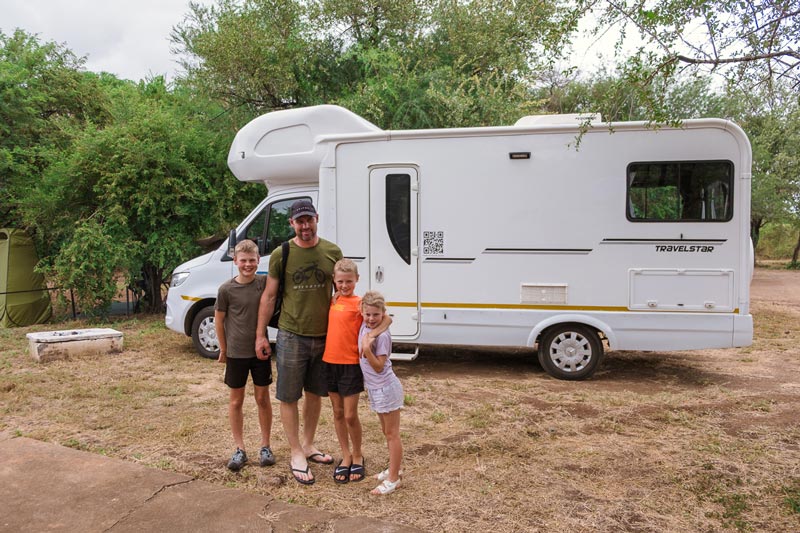
Border Crossings
Border crossings at the airport were no different to usual with general passport checks and filling in customs forms
Arriving into Namibia: Windhoek Airport Border
We did arrive in Namibia in the very first week that you had to pay for a visitors visa, so this took us a long time to sort out, but mostly because it was new to the customs desk. You could do this online before you arrived but they wanted a lot of information about where we were staying and phone numbers and way too much info to be honest, so we just did it at the airport and only added a couple of stops, without the detail and they never asked any more. Once we said we were camping in a rooftop tent, that seemed suffice.
You did have to do a health check coming into the country. You walked past a scanner that I think did your temperature and they asked at the desk if we were well and if we had malarials, but that was about all.
Is it hard to cross the border in Africa: Land Border Crossings
I was a bit apprehensive about the land borders as its just a bit of the unknown but they all worked out fine, they just took a while. The borders weren’t busy and each time they took about 1.5-2 hours as you had to “leave a country” then “enter a country” back to back. We crossed from Namibia to Botswana and then into Zimbabwe with our vehicle and here is our experience.
Here are the things we needed to cross the border with our vehicle (April 2025)
- Passports
- Kids birth certificates
- Letter from rental car company saying we were authorised to take the vehicle across the border
- Bring extra pens so the kids can help fill in the forms
- Confirmation of where you are heading to next (accommodation for your next night)
- Keep all your border crossing papers and any payments you have made. If you’re crossing multiple borders they will want to see that you paid your “vehicle import tax” on your way out as well and don’t throw them away. If you’re travelling one way the person who collects your car will need it for the way back too (we did not know this – took a while to find it)
We had to pay a small amout of vehicle “import” fees – a temporary import from bringing our vehicle from Namibia where it was registered into Botswana and Zimbabwe. From memory this was between $30-$50NZD
We didn’t need to pay for a visa to enter Botswana but we did have to pay to enter Zimbabwe which was $50USD per person.
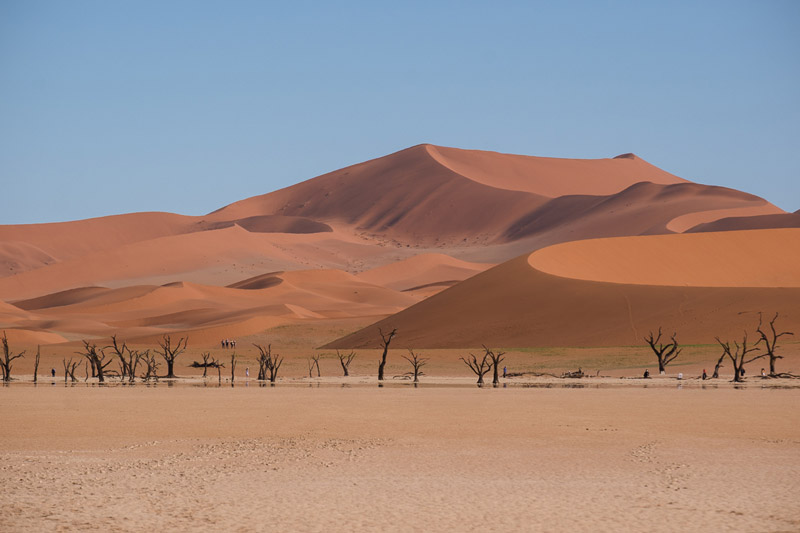
Namibia – Botswana Buitepos border
There’s not a ton of signage that says Park here, or anything like that, so we pulled up into a park and popped my nose into the first office which was the health declaration. The kids stayed in the car with Ashley and she just needed our passports to enter some info that we were well and I suppose tick some online boxes that we were good to go and then she sent us over to the other side of the road.
We ended up going to three different prefab counters and filled out “departure cards”, paid for the vehicle fees and then got everything double and triple checked. It did seem like we were giving the same info over and over again but you aren’t going to argue with a customs officer right?
And then it was the same again on the other side of the border, basically just the next building down.
I was a little worried about food as I had read that you aren’t allowed to take fresh food over the border. We tried to eat most of the food we had but we did have some things left over. They just asked what we had and we said groceries and it seemed like personal consumption was okay. We also met some people who travelled from South Africa to Namibia and crossed there and they were able to bring food too. So perhaps I didn’t need to empty it out. The range of food was better in Namibia compared to Botswana and Zimbabwe so maybe stock up, at least on some staples if you are spending a long time.
At the Buitepos border there was only us and a handful of local people driving through and it still took over 90 minutes.
Zimbabwe Maitengwe Border
In Zimbabwe, we crossed at the Maitengwe border (which I don’t recommend – not because of the border, but you’ll drive through the communal lands where google maps doesn’t exist, so you’d need to know exactly where you are going or be up for a hell of an adventure.
Coming into Zimbabwe, the people were really nice but they’d never met New Zealanders before… this was a very local border. So it took longer to get sorted.
Also very funny that we were told that we had to get the final papers checked at the last little office we could see across the grass, then that same man ran across to do the check… of the things we’d just signed off on.
Anyway, it all worked out and everyone was pretty nice or at the very least official/professional and we had no issues. Just allow plenty of time.
More in my Africa Travel Guide series
- Namibia 10-14 day self drive itinerary
- Moela Safari Lodge: Our family review in Botswana
- Hwange Community Rhino Project: a great way to visit a real community benefiting from a conservation project and walk with rhinos
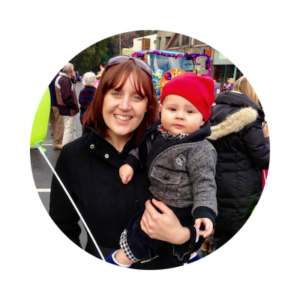
Jennifer
Founder of Backyard Travel Family
Jen is a super organiser when it comes to travel. Having travelled extensively in Europe and Africa, has lived in London and the USA and holidayed in many parts of Asia, she is not a newbie to the travel space
Jen has three young children, 11 and under and travels around New Zealand with them.


